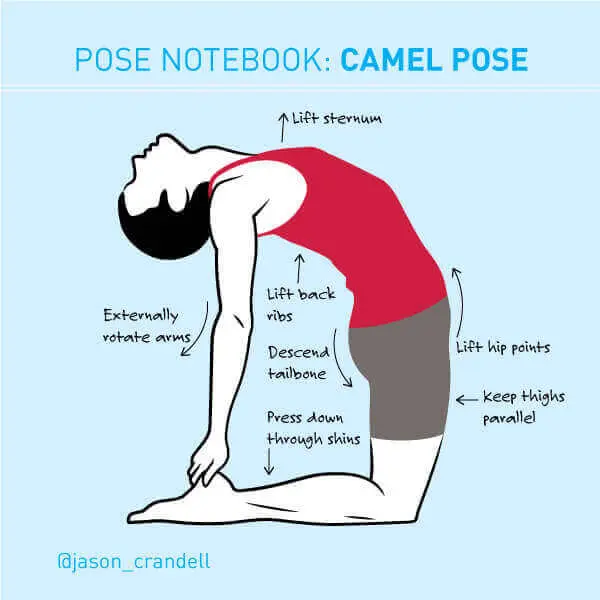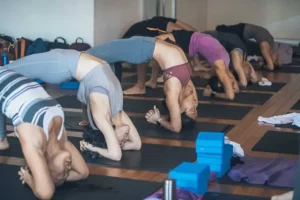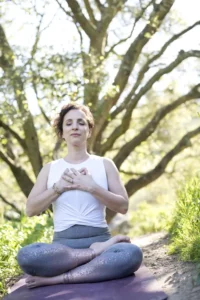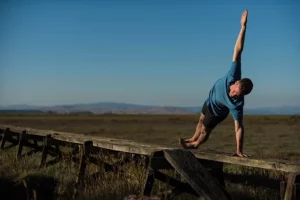I wanted to like Ustrasana, or Camel Pose, for years, but everything kept getting in my way. Everything, meaning, my lower back, my neck, and the way that my ego was offended when I practiced the pose.
Then, it dawned on me that one of the techniques in the posture that nearly every teacher (including myself) uses was totally irrational. The problem —for my body and many others—was forcing the pelvis to stay positioned directly over the knees. To say this another way, the cascade of problems stemmed from keeping the legs vertical and stacking the hips directly over the knees.
Now, before I continue, let me make something clear: Many people can keep their pelvis positioned vertically over their knees. This alignment is not bad. In fact, it works very well for students who have fairly flexible hip-flexors. However, there are plenty of students—like myself—for whom this instruction does greater harm than good.
See also Essential Sequence: Learn to Love Camel Pose
Should the Hips Stack Over the Knees in Ustrasana?
Let’s look at why keeping the pelvis directly over the knees doesn’t work for everyone.
To begin, think about Bridge Pose for a moment. With the exception of the position of your neck, Bridge pose is just like doing Camel Pose— but on your back. When students practice Bridge Pose, they are never told that they must lift their hips to the same height as their knees.
Of course, lifting the hips this high is a good thing if it doesn’t cause compression in the lower back. But, making this a prerequisite for the pose would be silly. There are zero mechanical reasons to lift the hips as high as the knees, and requiring them to lift this high would likely cause students with tighter hip flexors to move too far in the lower-back in order to make up the difference.
The same goes for Ustrasana. If you require your hips to stay vertically aligned over your knees and you don’t have sufficient hip flexor mobility, you’re likely to compress your lower back. Another way to say this: Your lower back is likely to move too far in order to compensate for your lack of hip flexor mobility. And if your lower back is excessively arched (and compressed) in this pose, you’re more likely to misalign other parts of your body, including your neck.
See also Backbends: When and Why to Engage your Glutes
How to Find Safe Alignment in Ustrasana
First, let me reiterate that keeping the pelvis directly stacked over the knees is not a problem if you have sufficient hip flexor mobility. If you practice Camel this way and you’re comfortable in your lower back, there is no reason to change your approach. This alignment is only a problem if it is creating a problem. Unfortunately, this alignment does cause a problem for students with less hip flexibility.
So, what’s the fix? Easy. Simply allow your pelvis to move slightly toward your heels in this posture. Another way of saying this is allow your hips to move slightly back instead of pushing them forward. This should decrease compression in your lower back by reducing the demand on the hip flexors. While doing this posture, remember to engage the bottom of your buttocks and do all the other skillful things that you do in backbends.
One note about your neck in Ustrasana. It’s essential to sort out your lower back before sorting out your neck. However, if your neck is still uncomfortable after you’ve sorted out your lower back, try keeping your chin slightly tucked toward the throat in the posture. This will make the muscles on the front and side of your neck work while preventing your neck from hyperextending. Since this can be demanding on the neck, you might want to shorten your duration in the pose to a few breaths.
And, remember, if you’re still unable to make friends with the pose, there’s always Bridge Pose instead.
{illustration by MCKIBILLO}



